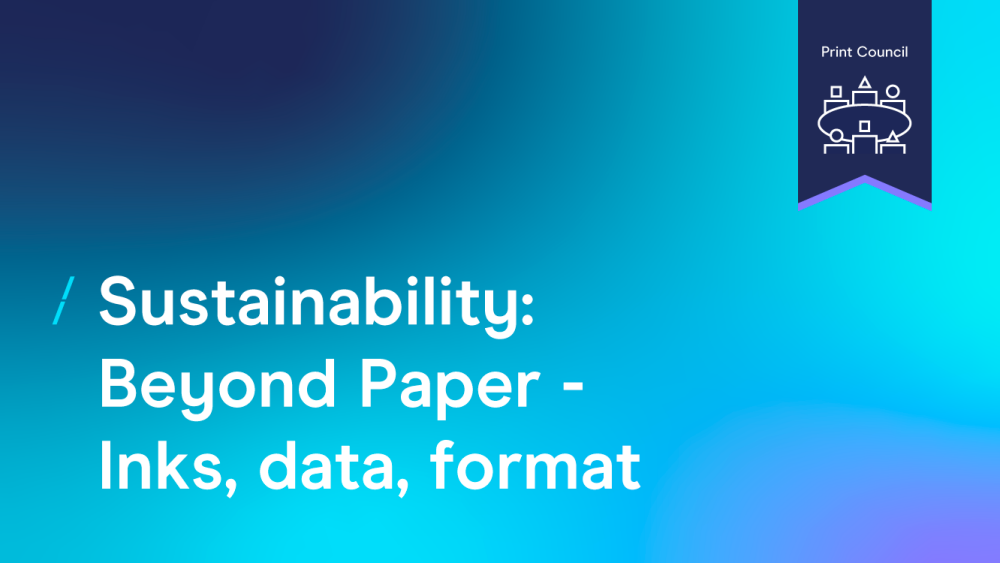Beyond Paper: Inks, data, format
21 Nov 2023

Of all the factors which contribute towards a piece of print’s total carbon footprint, the substrate will almost always make up the majority of the carbon footprint. For example, if we were to produce 85,000 20pp A5 booklets on an average 90gsm silk stock, pack them in single walled cardboard boxes, and deliver them 200km away, around 61% of the carbon footprint would be from the paper.
However, often the rest isn’t accounted for and is forgotten about. Whilst accounting for the largest single contributor is a sensible place to start, it is by no means the end goal. Armed with the correct data, we should be looking beyond paper to the other elements which contribute towards print’s carbon impact.
Calculate
Mapping the individual elements which contribute to the carbon impact is an important starting point, and standards like ISO16759 help in providing a framework. When you go through this process, you uncover a range of elements which contribute to the impact of a print campaign such as plates, ink, presses, packaging, distribution, proofing, design, binding, cutting, and finishing. Understanding the impact that these individual elements have on a project-by-project basis allows us to design out carbon from the process.
Ensuring accurate and consistent methodologies across different providers as well as a unified approach to calculating carbon emissions factors is crucial to be able compare apples with apples and make informed decisions.
Mitigate
Once we have granular and accurate data, we are in a much better position to re-engineer projects to maximise the functionality of a printed product whilst mitigating the carbon impact. This stage is the best opportunity to really understand how various changes can make a significant difference to the overall carbon footprint.
Using the example from earlier, the next biggest contributors to the carbon impact of this project are the ink, binding, and delivery. Knowing this, we know where we can focus our attention to have the biggest impact on mitigating emissions. In these instances, trialling new inks and limiting delivery milage can be quick wins to reducing the overall impact of a campaign.
Another key influencing factor will be the recyclability and the recyclability messaging on the piece itself. The carbon impact of a campaign going to landfill vs being recycled is significant!
Data is another key consideration, particularly for mailing campaigns. Data cleansing will allow you to reduce volumes without impacting on return which not only comes with a cost saving, but a carbon saving too.
Offset
Once we have mitigated as far as possible, we can then offset the remaining carbon associated with the campaign. Whilst offsetting is by no means a perfect solution, and we are working with organisations to provide more robust alternatives, it remains a commercially viable and valuable option when done correctly. Supporting verified schemes (we opt for the Gold VER schemes) which also contribute towards other UN SDGs (Sustainable Development Goals) helps to maximise the positive impact.
Communicate
Communicating the carbon impact of your campaigns not only serves to demonstrate to the recipient/user of the piece that you’ve taken the carbon footprint into account and done something about it but helps to improve carbon literacy. The more touchpoints customers have which include carbon calculations (as we’re starting to see more frequently in the travel sector), the more people will be able to contextualise and effectively assess the environmental impact of their activities.
As carbon literacy improves, we’ll all have the knowledge and the insight we need to make decisions which are both environmentally sustainable and commercially viable. Which is where we would all like to be!
Tom Maskill, Sales & Sustainability Director at Webmart.

Please login to comment.
Comments